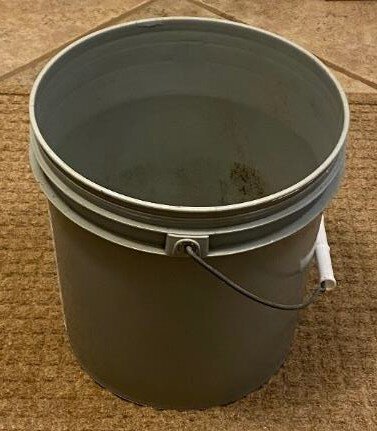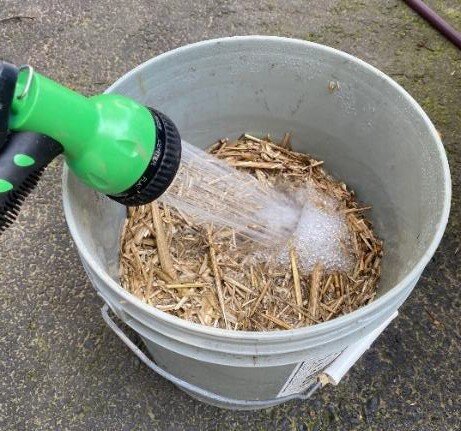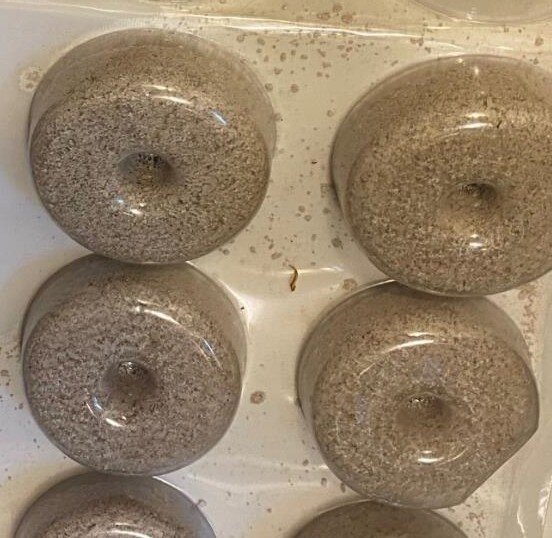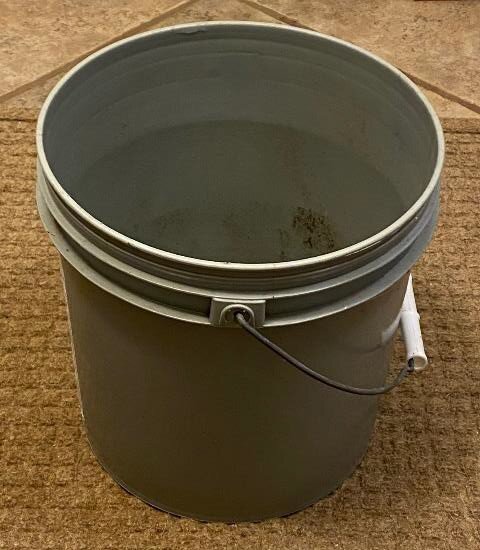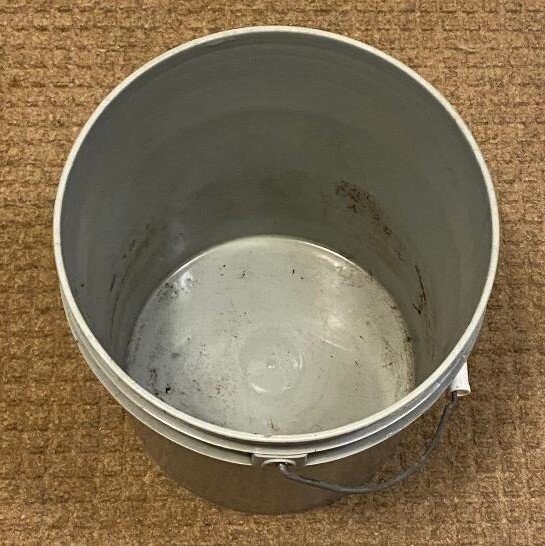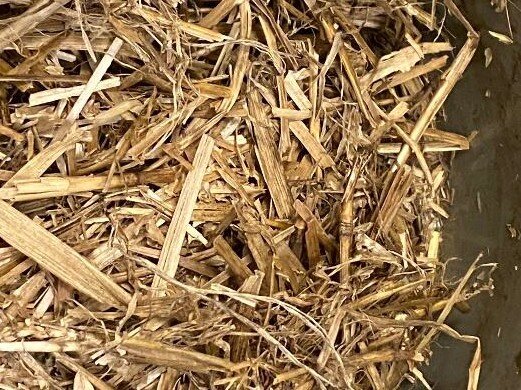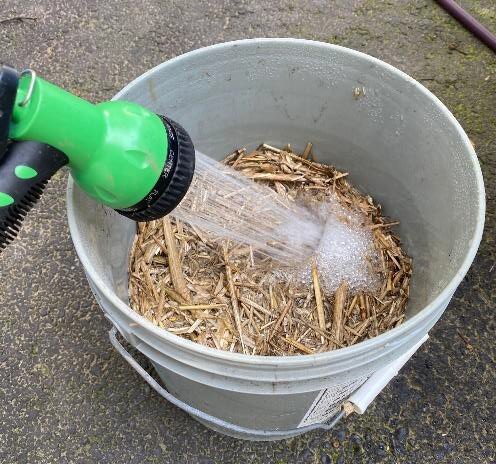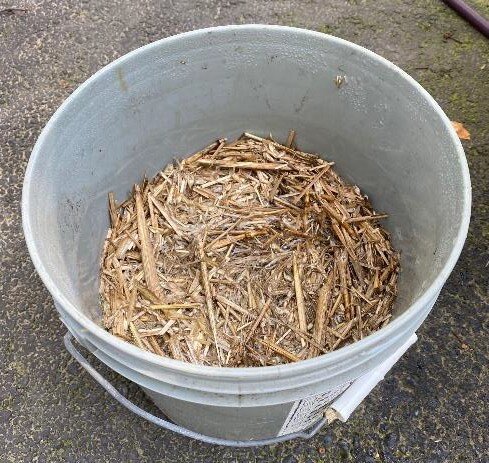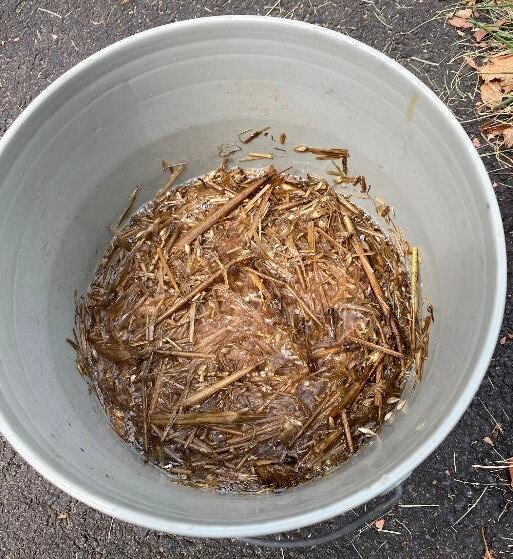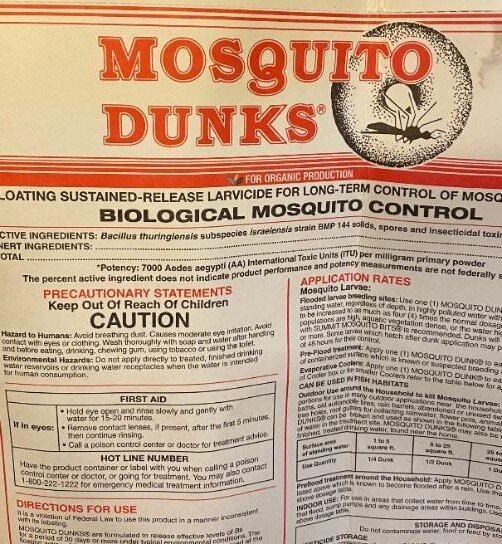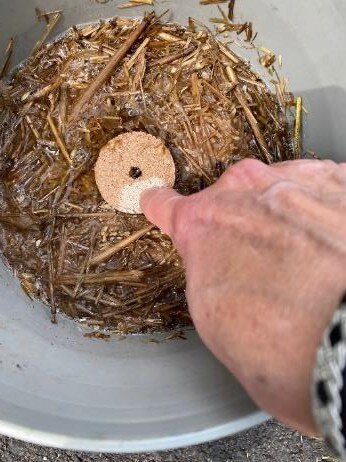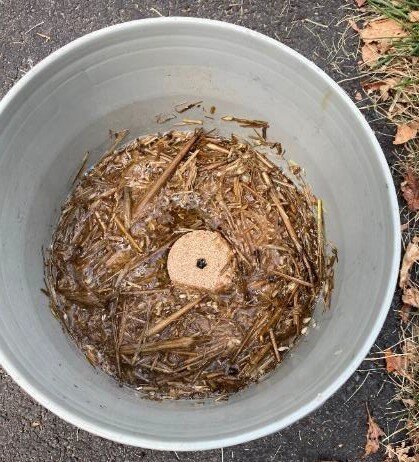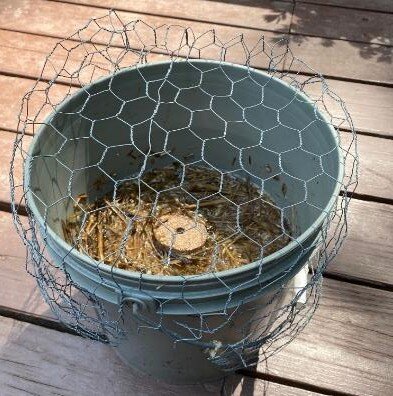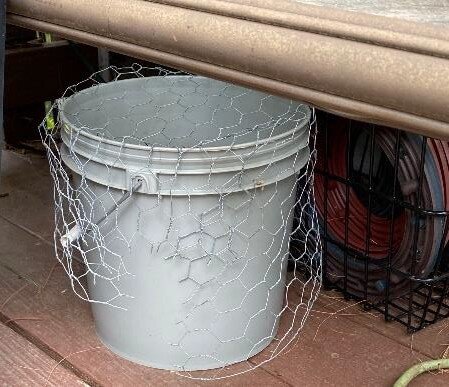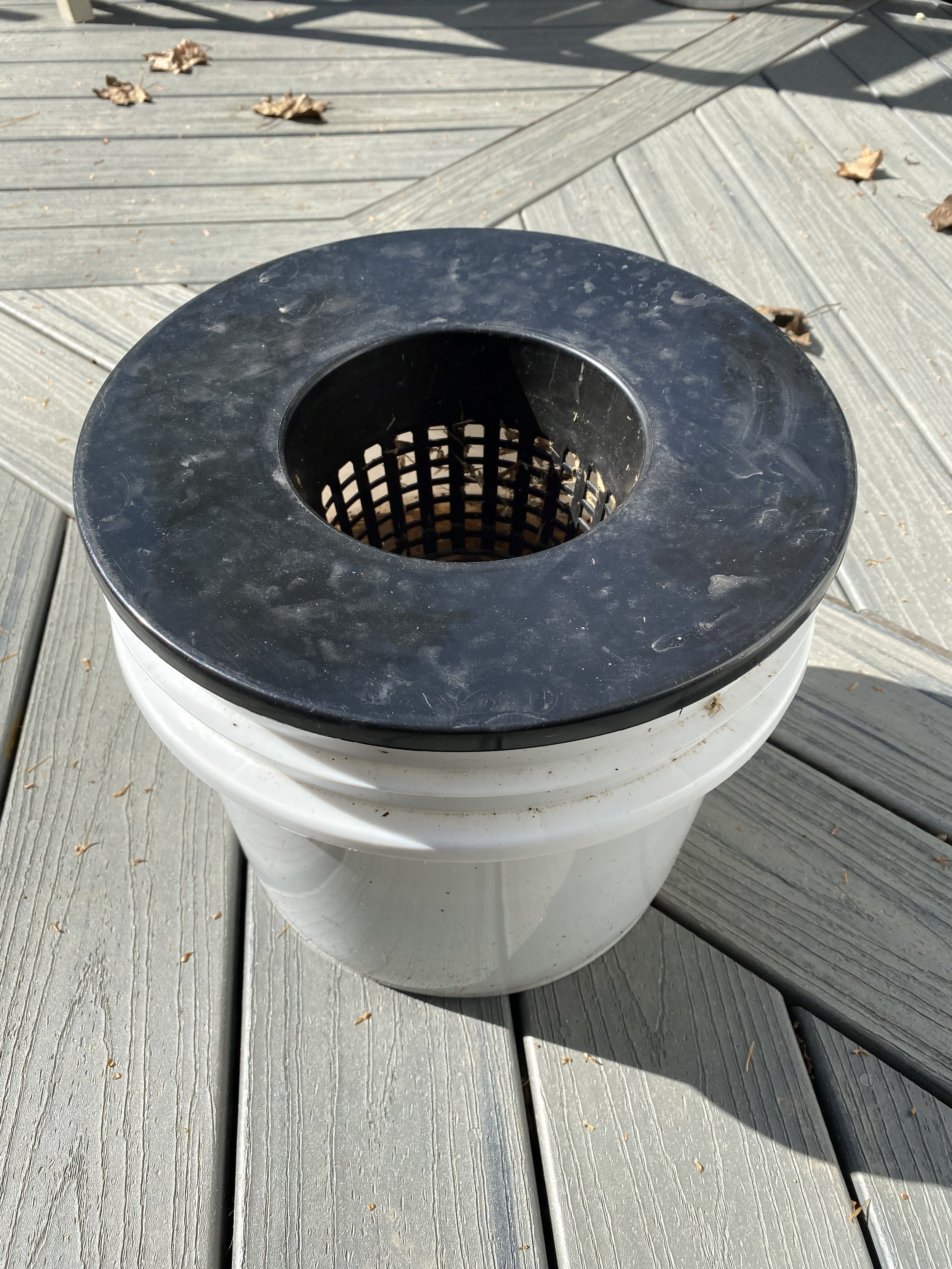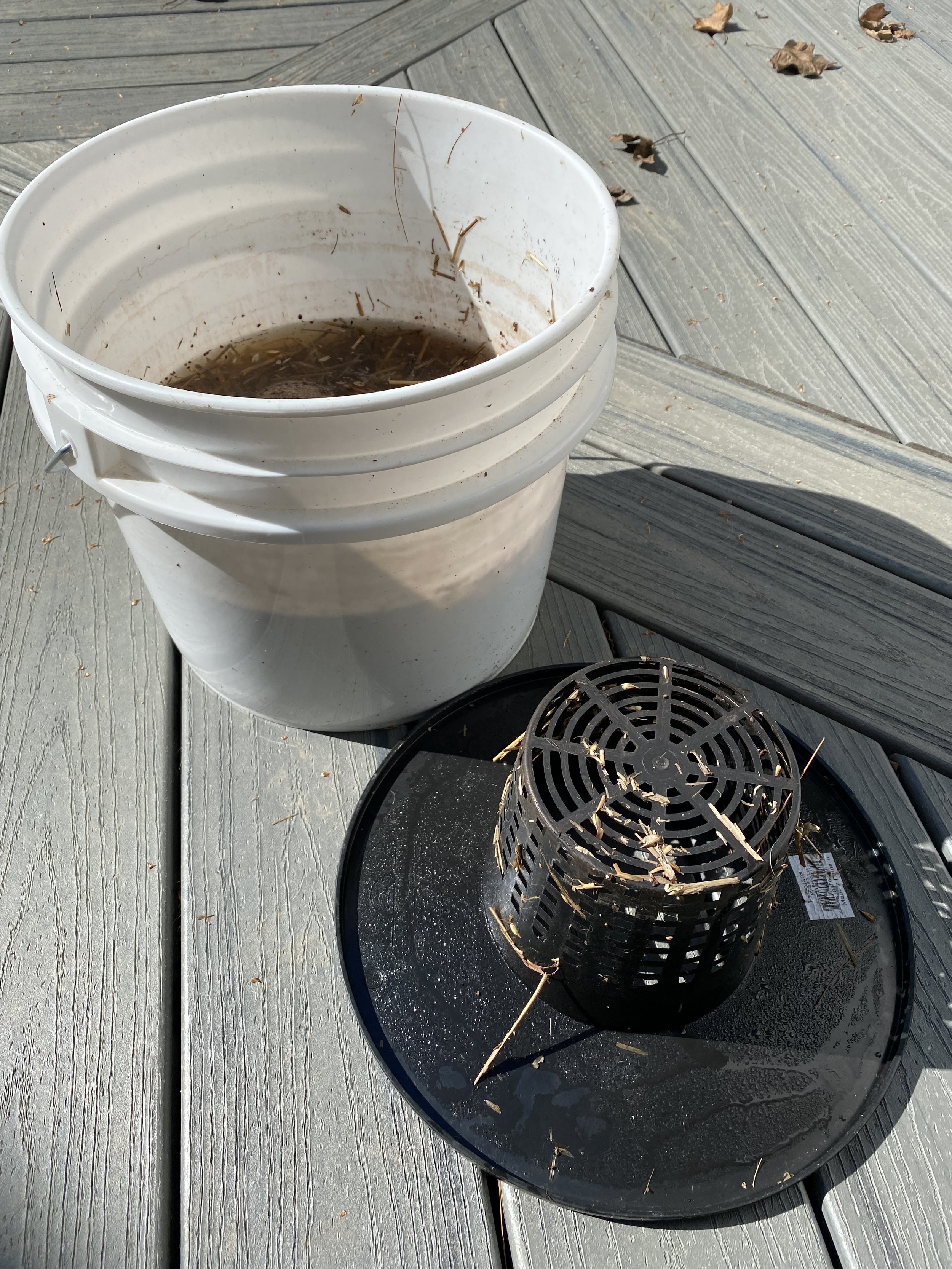Photo: Mosquito larva trap, Jill Spohn
Original post August 28, 2021; updated 7/26/22 and 9/1/22
Jill Spohn
Douglas W. Tallamy, an entomologist at the University of Delaware, suggests controlling mosquitos at the larval stage instead of the adult stage. Spraying adult stage mosquitos requires spraying insecticide at such high concentration that it kills all insects, not just mosquitos. Changing the strategy for controlling mosquitos is necessary because beneficial insects such as bees and butterflies and their larvae are being eliminated at an alarming rate. Insects are at the base of the food chain and, without them, birds and other creatures that rely on insects are challenged to find enough food for themselves and their young. When they eat sprayed insects, the insecticide can build up and affect their health.
There is an effective alternative to harmful mosquito spraying – reducing standing water on your property and building mosquito larva traps.
A mosquito larva trap works because adult mosquitos are drawn to a fermenting solution and lay their eggs. An added Mosquito Dunk®, or similar product that releases a selective bacterium, affects only the mosquito larvae.
I have tried this method at home in Northern Virginia and in Maine and have seen an impressive lack of mosquitos and pleasant times outdoors. I am a believer!
Steps for making a Mosquito Larva Trap
What you need:
Bucket
Straw or Hay
Water – funky water from a rain barrel would also work, says Tallamy
Mosquito Dunk® or another brand containing Bacillus thuringiensis (Bt)
Chicken Wire or similar screening – optional.
1. Use an empty bucket.
2. Add hay or straw to the bucket. I used 3 or 4 handfuls here – 3 or 4 cups.
3. Add water to the bucket. I fill the bucket up halfway. My ratio of hay to water is about 1 to 4.
4. Allow the water and organic matter to ferment for a few days. I usually let it sit for 3 days but if it’s hot, you probably need less time.
5. After 3 days, the mixture has fermented. Add the Mosquito Dunk®.
Place Mosquito Dunk® in the bucket on top of the fermenting solution. Dr. Tallamy may know when a mosquito has laid eggs, but I don’t. I place the Mosquito Dunk® in right before I set the trap.
6. Cover the bucket with chicken wire or similar screening that allows adult mosquitos into the solution, but keeps other critters out. Be careful of the sharp points on the chicken wire.
7. Set in place. Dr. Tallamy recommends a sunny spot but I have placed it in dappled shade with good results. The Mosquito Dunk® lasts for about a month and I replace the solution after about 3 or 4 weeks.
I try to put the traps close to places where we have had mosquito issues and keep them out of the way of our dogs. They should be out of the reach of children as well.
The CDC provides advice on mosquito control at home here and information on the mosquito lifecycle here.
I hope you will give all non-insecticide mosquito control methods a try. They really work, and limiting insecticide use is critically important. Dr. Tallamy has graciously given me permission to include this section from his book, Nature’s Best Hope, page 210:
Oppose mindless mosquito spraying by your township or HOA. Contrary to what the fogger operator may have told you, the pyrethroid-based insecticides used by mosquito foggers indiscriminately kill all insects, not just the mosquitos. Ironically, targeting adult mosquitos is the worst and by far the most expensive approach to mosquito control, because mosquitos are best controlled in the larval stage. Put a five-gallon bucket of water in a sunny place in your yard and add a handful of hay or straw. After a few days, the resulting brew is irresistible to gravid (egg-filled) female mosquitos. After the mosquitos have laid their eggs, add a commercially available mosquito dunk tablet that contains Bacillus thuringiensis (Bt), a natural larvicide, to your bucket. The eggs will hatch and the larvae will die. This way, you control mosquitos, and only mosquitos, without the use of harmful insecticides.
Learn more about Dr. Tallamy’s work in this video presentation.
Update on Jill’s Mosquito Larva Traps updated 7/26/22 and 9/1/22
I have tried to improve the appearance of the mosquito traps I use at home. I found plain, white 3.5 gallon food-safe buckets (with handles) that I use with a black hydroponic growing lid (snaps on to secure in place). I got sets of 6 for our home. I use 2 on our deck, 2 underneath our deck, and 2 on either side of our covered porch. I use a lid to try to keep our dogs out of the solution and to make sure that chipmunks and such can get out if they go in to investigate.
Feedback from Laurie Tyler Dodd (Audubon at Home Certified Wildlife Sanctuary client): I have also had luck with much smaller (and less conspicuous) containers. I use takeout containers that are just 2 or 3 inches deep. with leaves and mosquito bits (or pieces of dunks), they can fit underneath shrubs or porches. Of course, they are more prone to drying out, so this works only if they are being checked periodically. A shallow container reduces the risk of drowning (by wildlife or top-heavy toddlers), though I have still lost bees at times.
Here are photos:
Frequently Asked Questions with Dr. Tallamy’s Answers – Answers from Dr. Tallamy
Question: Could I use grass clippings or old leaves instead of straw or hay?
For all I know grass clippings work just as well, but I'm not sure. The old leaves also may work just as well, but I don’t know for sure.
Feedback from Laurie Tyler Dodd: I have been successful using grass or dead leaves instead of hay. I think this would be helpful for a lot of folks who don't have hay around - unlike me, the family of hay-loving guinea pigs! Here is one way I know my shallow traps baited with grass/leaves still work. One of mine tipped over and drained but was then put right-side up again - with leaves but no Bits. When filled by rainfall, mosquito larvae soon appeared! After Bits were added, they vanished. So fermented hay may attract MORE skeeters than leaves/grass, but the latter still works!
Question: Can I remove the solid organic material once it’s started fermenting?
I think the straw or hay needs to remain in the water to keep generating the attractive smells that bring in the female mosquitoes.
Question: My traps are 3 or 4 weeks old. Do I need to dump the solution and restart the trap? Or can I just add new mosquito dunks?
I think you can just add some water to freshen it up a bit. Maybe throw in a few more leaves. Make sure there’s enough of the mosquito dunk.
Question: If I put the dunks in before fermenting will this decrease the dunks’ amount of chemicals due to chlorine affecting Bti?
That's a waste of dunk. There are no mosquito eggs in there yet so why put the dunk in early. They don't last forever.
Question: What do you recommend we do with the water that now has dead larvae, Bti, and old straw or hay in it? Can the spent dunk and straw/hay be composted?
Sure. It is harmless


